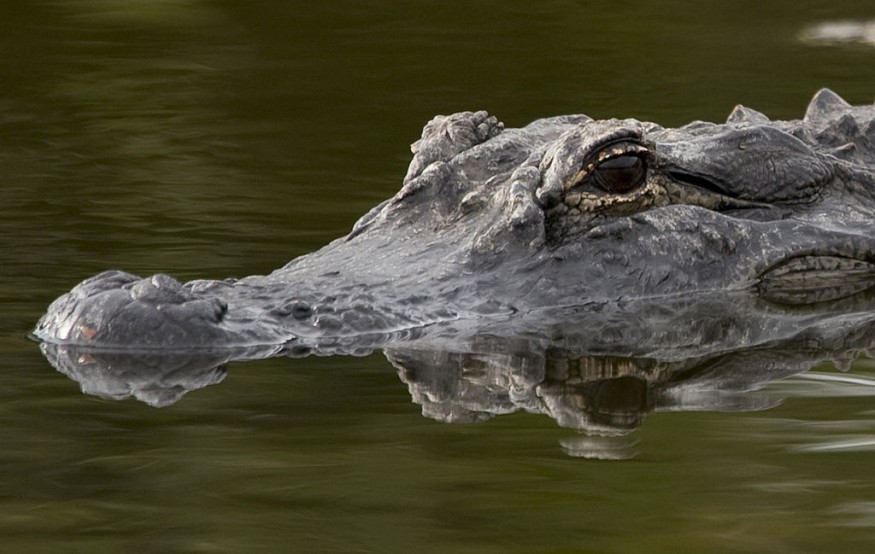
After ear infection symptoms were noticed, six veterinarians were able to get Brooke, a Florida alligator, the CT scan he required with the help of a strappy board.
Six Vets for a CT Scan
This week, an enormous patient named Brooke required six vets at the University of Florida's College of Veterinary Medicine to be as snappy as they could.
The 376-pound alligator, which has been residing in the lagoon at St. Augustine Alligator Farm Zoological Park for almost 20 years, was brought in for testing after exhibiting periodic head-rolling and other signs that prompted the checkup.
The reptilian patient was tied to a strappy board for the veterinary examination, and Dr. Bridget Walker drew blood while covering his eyes with a towel to prevent him from staring outside.
Walker fearlessly straddled the enormous reptile in photos posted by the institution on its Facebook page on Thursday, while Brooke was supported by a man who was standing right in front of him.
Brooke, The Alligator From Florida
Radiographs and a CT scan were also given to Brooke, who was named in honor of the Brookfield Zoo where he was born, to aid with the diagnosis.
Six staff members assisted in wheeling the reptile into the CT scanner for the exam, which was captured on camera.
According to reports from FOX Weather, the college's zoological medicine service team discovered that Brooke had an ear infection.
The post on their social media account expressed how the vets are hopeful that he will soon be on the road to recovery.
Later, the St. Augustine Alligator Farm Zoological Park personnel congratulated the college team for providing the animals with such wonderful care.
However, Brookke was neither the first nor the biggest alligator to receive care at the veterinary college.
Bob, St. Augustine's Other Enormous Alligator
The clinic gained international attention in 2020 when it accepted Bob, a 660-pound alligator from the same zoo in St. Augustine who had been limping, as a patient.
The 38-year-old monster had his jaws taped shut, was shackled to a gurney, and had X-rays taken of his right leg, which revealed evidence of a bone infection.
Bob was given painkillers and antibiotics, and a few days later, it was reported that he was doing better, New York Post reports.
Alligators in Florida
The population of American alligators, which are now widely dispersed across the state's golf course lakes and riverbeds, is flourishing after formerly being on the verge of extinction.
Florida, particularly the ancient city of St. Augustine, provided the ideal habitat for this reptile.
Alligators are elusive throughout the day, but come out at dusk to discreetly eat smaller creatures.
Because alligators often avoid interacting with people and pose minimal harm to them, encounters with these extinct dinosaurs are quite infrequent in areas where human buildings are present.
Alligator encounters that end in danger for people are uncommon, thus it is usually safe to observe alligators from a distance.
There are many safe options to see these wonderful creatures in St. Augustine and Florida. For years, the famed Alligator Farm has preserved and displayed wildlife, particularly alligators.
It is a well-known attraction in the city. A segment of the farm is solely devoted to indigenous reptiles and endangered animals, including the magnificent Albino Alligator exhibit, which is rarely seen in the wild, according to The Ocean Gallery.
Related Article : Largest Everglades Crocodile "Croczilla" Seen Basking in Florida Sun
© 2025 NatureWorldNews.com All rights reserved. Do not reproduce without permission.





